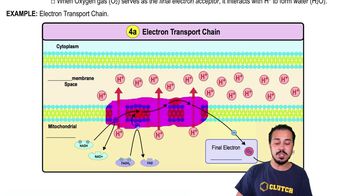There are three mechanisms for the phosphorylation of ADP to produce ATP. Write the name of the mechanism that describes each of the reactions in the following table.
<IMAGE>
 Verified step by step guidance
Verified step by step guidance



There are three mechanisms for the phosphorylation of ADP to produce ATP. Write the name of the mechanism that describes each of the reactions in the following table.
<IMAGE>
Which of the following is the best definition of the Krebs cycle?
a. the oxidation of pyruvic acid
b. the way cells produce CO₂
c. a series of chemical reactions in which NADH is produced from the oxidation of pyruvic acid
d. a method of producing ATP by phosphorylating ADP
e. a series of chemical reactions in which ATP is produced from the oxidation of pyruvic acid
All of the energy-producing biochemical reactions that occur in cells, such as photophosphorylation and glycolysis, are ________ reactions.
Fill in the following table with the carbon source and energy source of each type of organism.
<IMAGE>
Use the following choices to answer questions 7–10.
a. E. coli growing in glucose broth at 35℃ with O₂ for 5 days
b. E. coli growing in glucose broth at 35℃ without O₂ for 5 days
c. both a and b
d. neither a nor b
Which culture produces the most lactic acid?
Write your own definition of the chemiosmotic mechanism of ATP generation. On Figure 5.16, mark the following using the appropriate letter:
a. the acidic side of the membrane
b. the side with a positive electrical charge
c. potential energy
d. kinetic energy